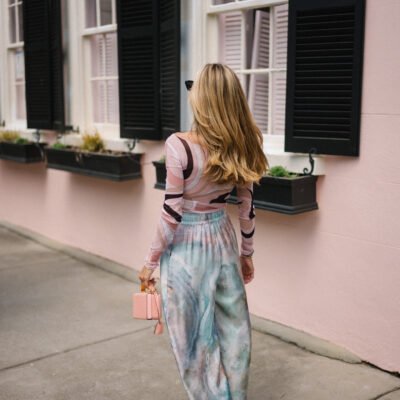In recent years I’ve done a lot of travel, from Texas to Iceland and everything in between. And while I love experiencing new things, I don’t always love travelling with liquid conditioner and shampoo. This nourishing conditioner bar recipe is great for traveling or even for use at home!
The best conditioners are ones that detangle hair, are moisturizing, and don’t have sketchy ingredients. I have this homemade hair conditioner I like, but sometimes it’s nice to have a solid conditioner bar.
What’s in a Conditioner Bar?
Shampoo bars have been in style for a while now for hair care routines. I shared a post years ago with a recipe for a hydrating shampoo bar. It’s basically handmade soap that lathers and cleans hair with natural ingredients. Conditioner bars are similar but use more moisturizing ingredients instead of soaps and detergents. They’re popular as a more eco-friendly (and even zero waste) alternative to regular shampoo & conditioner.
There are lots of cleaner versions out there, but most of them still contain behentrimonium methosulfate or chloride. This chemical is made from canola oil (often GMO) and is extracted with solvents (also not a healthy option). While the end result is technically safe, it’s certainly not very natural. There are mixed reviews on this ingredient, but the safety data is a little lacking. So I wanted to create a conditioner bar that skipped it.
I like that DIY conditioner bars are an easy way to skip the parabens, silicones, and sulfates found in conventional shampoos. You can even make a fragrance-free conditioner bar. They’re also single use plastic-free since you can skip the plastic bottles.
It’s easy enough to create a bar that’s completely oil based. These work well for damaged hair, dry hair, curly hair, and frizzy hair. For certain hair types though, like those with thinning hair or fine hair, they can be too heavy. And if you use too much, it can leave hair feeling weighed down, greasy, or frizzy.
Natural Conditioner Bar Ingredients
Some of my daughters and I have long hair, so I wanted something that would work well without making it greasy. And while some of us are blessed with natural curls, my hair is definitely straight and finer.
This conditioner bar recipe incorporates some lighter ingredients, like glycerin and aloe into the mix. And instead of beeswax, it uses cocoa butter and mango butter to harden the bar. I also added hair loving oils like jojoba (or argan) oil and lavender and rosemary essential oils. These promote healthy hair and make it smell nice! If you want an unscented version you can leave the essential oils out, but they do add potent health benefits.
Since the recipe uses both water and oil soluble ingredients, I also use emulsifying wax. This helps to combine all of the ingredients together. Usually when I make lotion bars (a similar process) I simply pour the hot liquid into my silicone molds when done. For this recipe, you have to stir as it cools to prevent the mixture from separating.
This recipe is pretty simple and basically involves melting, stirring, and pouring. It leaves hair feeling soft and smells amazing! Try it along with this DIY shampoo bar.
Natural Solid Conditioner Bar
This DIY natural conditioner bar is portable and helps hair stay soft and nourished.
Yield: 4 bars
-
Add the cocoa butter, mango butter, jojoba oil, and emulsifying wax to the top of the double boiler. Heat over medium-low heat or until completely melted, whisking occasionally.
-
While the oils are heating on the stove, combine the aloe vera, glycerin, and essential oils in a separate small bowl.
-
Once the oils are completely melted, turn off the heat and slowly pour in the water based ingredients. Whisk continuously while pouring.
-
Let the mixture cool in the fridge for about 30-40 minutes. Stir or whisk every 10 minutes until it’s creamy looking, opaque, and the consistency of thick batter.
-
Spoon the mixture into your molds and smooth out the top.
-
Let cool in the fridge for at least 4 hours or until hardened. I left mine overnight.
-
Use after shampooing (see more directions below). These also make a great skin lotion bar!
- From the research I’ve done this should be safe for color-treated hair. However, ask your hairstylist if you’re unsure.
- You can also apply a light layer of this to really dry hair for use as a leave-in conditioner.
How to Use a DIY Conditioner Bar
A little bit goes a long way! Avoid using too much conditioner or your hair can feel greasy. And since the scalp naturally produces oils, most people don’t need to condition it.
- Rub a layer of conditioner bar on your hands.
- Rub your hands on the ends of your hair and work up. Avoid the scalp.
- Use very warm water to rinse, which will help the oils further disperse.
Have you ever used a shampoo or conditioner bar before? Leave a comment and let us know!




